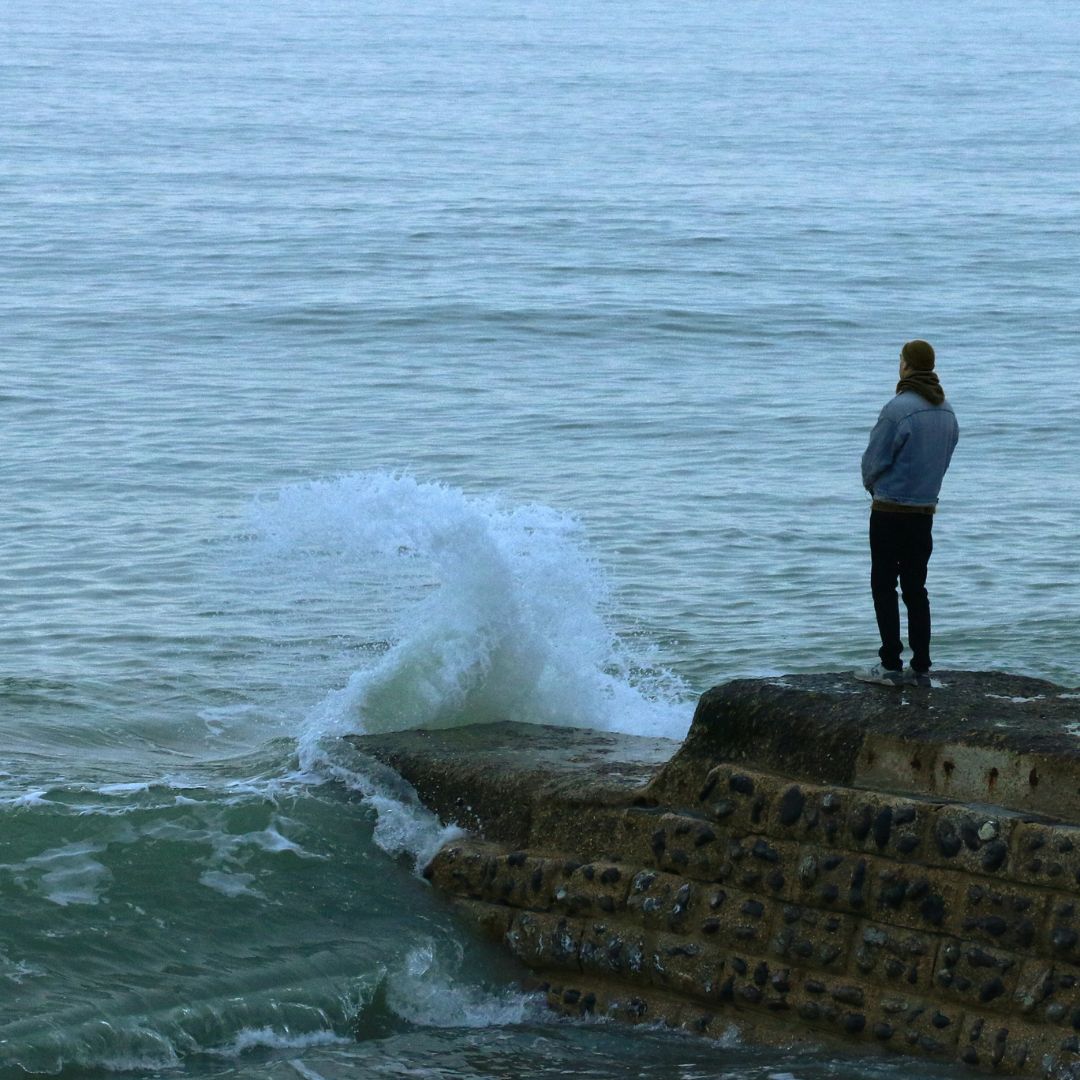If your worries about the planet have become a raging storm in your mind – or an overwhelming emotional flood – this article is for you.
In Part 1, we discussed how eco-anxiety is a natural emotional response to climate change. When we try to escape our fear, we can end up stuck in unhelpful patterns. Finding a way out requires learning to navigate through this pain.
In this article, you’ll learn tools that can help you move through these feelings and identify what you want to do about them. These strategies aren’t quick fixes. At first, they might make us feel even more anxious. That happens when we start to face our fears. However, these strategies will help us manage our worries in the long run. Using these tools regularly, along with other ways to cope with eco-anxiety, can help us live better.
Approach yourself with compassion
Feeling worried and anxious about what’s happening to the planet is okay. Your feelings are real and show that you care about our world. Your mind is trying its best to help you deal with something really big and hard to handle. Be kind to yourself, and know it’s normal to feel this way. Learn more here about being kind to yourself.
If you aim for perfection, you risk doing nothing. Give yourself permission to make mistakes and to struggle. When you feel defeated or get stuck, just try to notice that. Take time to rest, recover, and take care of yourself as needed. When ready, gently bring yourself back to trying again.
Face your fear and feel your feelings
Your mind wants to keep you from feeling bad. Avoidance can prevent you from coping effectively and make things worse. To move forward, you have to face the bad feelings the climate crisis brings and stop trying to ignore or push them away.
Take some time to think about the worst parts of the environmental crisis:
- Ecosystems are being destroyed,
- species are dying,
- people are being hurt or forced to flee,
- bad weather like flooding, dangerous heat, fires, smoke, and drought.
These things are already happening. They may have already affected you or people you love. They are also getting worse. Accept these things – not because you are okay with them – but because it’s the only way to move forward. Pretending they are not true won’t change anything.
Notice what feelings arise. Fear? Grief? Anger? Guilt? Heaviness?

Observe these feelings. Look at them closely, as if seeing them for the first time.
Try to find where they are in your body. Let them be there. Give them room. Think of them like guests in your house – instead of shutting them out, welcome them in. Don’t try to change or stop them. Just let them move through you however they want to.
Even though it can hurt, accepting the truth and our feelings helps us handle things better and feel ready to do something about them. Practice staying with these emotions. Allow them to flow through you and carry you toward greater understanding. If helpful, learn to breathe mindfully with these thoughts and feelings, allowing them to come and go without judging them.
Turn emotion into motivation
Your emotions emerge from your connections – to loved ones, your community, your fellow humans, and all living things. They show what is important to you and can help you decide what to do. Understand and embrace how you are connected to everything, tune into your feelings, and listen to their guidance:
- What do they tell you about what matters to you?
- …About the sort of person you want to be?
- What kind of world do you want to bring about for future generations?
- What do you want to do more of, do less of, or do differently?
Imagine a future version of yourself who has dealt with all these tough times in the best way:
- What values or principles did you follow?
- How did you treat yourself? Other people? The Earth?
- How can you start acting like that person right now?
Use these insights to guide how you react to your feelings and what actions you take.

Foster a helpful mindset
Our minds talk a lot. When things are hard, our minds can speak in ways that don’t actually help us.
For instance, if you’re considering joining a beach clean-up, your mind might come up with negative thoughts, like “What if people think you’re a fraud?” or “Why bother? It won’t make a difference.”
Listening to these thoughts might convince you to give up even though this is important to you.
Work on learning to “catch your mind” when it starts to think in unhelpful patterns.
Try to notice and name them:
“What if?” thoughts are showing up; My mind is saying “there’s no point.”
Then, try to talk to yourself in more helpful ways. If you get good at this, you’ll become more successful at doing what’s important to you, even when anxious thoughts are chattering away in your mind.
More Helpful Eco-Anxiety Resources
If you want to work through your emotional response to the climate crisis in more depth:
- Check out resources from the Good Grief Network and Active Hope.
- If other worries or anxiety also get in the way, learning more skills for addressing them may be helpful. Check out the MindShift CBT App or explore many other Anxiety Canada tools.
- If you’re still struggling, consider seeking professional support.
Now that you have some ways to deal with the tough feelings that come with the environmental crisis, you might feel ready to do something about it. How you choose to respond to this challenge is up to you. There’s no one perfect answer. But if you want to learn some ways to take action while also caring for your mental health, check out Part 3 in this series, “How to Transform Eco-Anxiety into Eco-Action.”
Thank you to Dr. Robert Selles, who created this resource. Special thanks to other members of the Scientific Advisory Committee for their input and review: Drs. Melanie Badali, Carmen McLean, Lynn Miller, Marlene Taube-Schiff, and Maureen Whittal.
